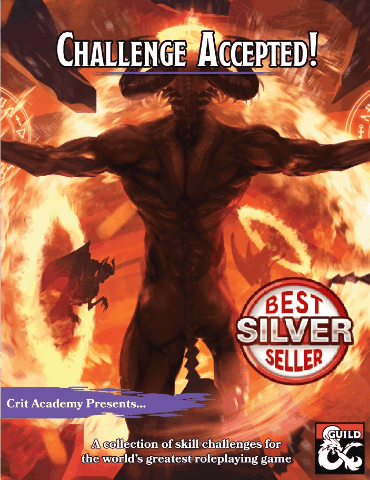Class Analysis: Bard and Rogue
- Justin Handlin

- Jan 4, 2020
- 5 min read

In Episode 11, we answer a question how to increase the variety of shields in Dungeons and dragons without having to make them magic items or just give them the traditional AC bonus. Easily expanding the usefulness of the shield from just a simple design they currently have in D&D 5th Edition. Such as lowering the AC and allowing the use of the Fighting Style once an encounter, or even just simply reflavoring the use of the Dodge mechanic as a flavor for a tower shield.
In our main topic we break down the features of the Bard and Rogue features in the Dungeon and Dragons Player Handbook. We touch on the mechanics and how they function, as well how we would reflavor them to give them a fresh and unique feel.
For example, the Bard's signature spell Vicious Mockery was reflavored by a Justin for his summoner, where it summoned a special archer for an instant who loosened homing arrow. Are character concept is a reflavoring of the Bard and may spark your own creative ideas. On another Tiefling character, Justin reflavored the Fast Hands feature as a prehensile tail, to easily explain why he was so adept and quick with levers, potions, and all the mundane gear used.
Unearthed Tips and Tricks: New and reusable D&D content for you to bring with you on your next adventure.
Character Concept:
The Mime
The battle begins, and the bandits begin to close in from every direction. The fighter readies her blade, the cleric grips his holy symbol, and the wizard clutches his staff, but the bard reaches behind his back and pantomimes grabbing an invisible rope to toss at the nearest foe. Suddenly, the foe’s body contorts: his arms become stuck to the sides of his body as he
stares down in disbelief. The bard gives the “rope” a tug, and the foe jerks forward. He’s
barely able to keep his balance, and the rest of the bandits look around in confusion giving the party just the edge they need to attack!
The Mime is essentially just a reflavoring of the Bard, but they turn their Bardic Performance into a pantomime rather than music. Vicious Mockery is a great spell to get creative with. What better way to deal your psychic damage or cause your foe to miss their next attack than by pretending to choke your foe from the other side of the room?
This character concept could even work for a character who is unable to speak; they could use their pantomime out of combat as their primary means of communication. Have fun with it!
Encounter Concept:
Murder Mystery
The players are invited to a lavish dinner at a noble’s mansion (possibly as a reward for
a previous job done). Many people of renown are in attendance, and everything seems to be
going splendidly - until the host turns up dead. The heroes must find out who committed the
murder by investigating clues, following red herrings, cross-checking alibis, and exploring
secret passageways. If they can’t find out who killed the host (and where, and with what
weapon) then they may become suspects themselves!
A murder mystery can take many different forms; don’t feel constrained to the stormy
mansion-secret-passageways staple everyone expects. The murder could happen on a ship
while the party is traveling from port to port. The party could’ve been told to meet a quest
giver in a room at the inn, but, when they arrive, all that they find is a puddle of blood.
Make the players use their skills (both in character and out). Try to involve the big dumb
fighter as much as the crafty rogue or wizard. Maybe - if a player was looking to make a new
character anyway - have a party member be the victim (with the player’s permission, of
course). Whatever you do, make sure to throw plenty of red herrings at your players to keep
them guessing, and have a strict deadline so that the tension keeps right up until the end. If
necessary (or if you just want to) watch some
Magic Item:
The Healing Bow (Cursed)
Ranged Weapon (Longbow), Rare
The Healing Bow is a bit of an odd item, very much for groups who love Shenanigans . It’s
a standard longbow, but whenever you hit a target with an arrow fired from it, it deals two
different effects to the target. First, it deals 1d6 damage. Then, the arrow glows with a green
light and the target gains 1d12 temporary hit points.
A risky item to use, this bow often ends up being intentionally fired upon allies in times of need. However, every now and then, it ends up doing more harm than good. Is it worth
keeping, or should you get rid of it? That decision is up to you.
DM Tip:
Classes from a Hat
Do you ever feel like your players are always playing the same types of characters (one player
always plays the big strong fighter, one player always plays the nimble rogue, one always plays the healer, etc)? Here’s an idea that will liven things up, and add some random chance to your game: Classes From A Hat!
Simply put, make a bunch of character concepts, put them in a hat, and have the
players draw them. Whatever they draw, that’s their character. You might have fully-fleshed out characters in the hat, or maybe a simple framework so the player can fill in the details.
You might have a race/class/background combo already assigned together, or you might want to have different hats for each category (one for races, one for classes, one for backgrounds, etc.). You might even want to have the players make the characters and then put them in the hat so each player has a different player’s character!
Now, obviously you might not want to do this for a full campaign, but for a one-shot it can
really change things up and force everyone to try something new. The players might even
realize they like their new characters so much they want to turn it into a campaign! Try it out,
and have some fun with it!
Player Tip: Don't be a Dick!
Shift the Focus
You’re a great roleplayer. Of course you are! When a situation comes up in-game you’re
always among the first to come up with a reaction from your character, to start looking
for solutions to problems, and to engage in the campaign world around you. The DM only needs to give you an opportunity to shine and you’ll shine your brightest. Great, right?
Well, not everyone is as great of a player as you are. Other players might not be as seasoned
as you, and maybe they keep quiet and follow the leader rather than take charge themselves. While this isn’t necessarily a bad thing - everyone starts somewhere - you might want to try and encourage other players to engage in the world more. There’s a lot of ways this can be done: maybe you can ask the other player (incharacter, preferably) what they think about a given course of action. Maybe you can tell them your plan and ask for ways to make it better. As long as you’re incorporating the other players into the action, they’ll be encouraged, and they’ll feel more confident about participating on their own.
Before you know it, they’ll be the one helping newer players engage in the game world!
We hope you enjoyed your experience here on Crit Academy, if you did, please consider sharing our show and leaving a review here on itunes.
Support Us:
Subscribe to our Blog and be entered to win phat lootz every week.
Visit our website at www.critacademy.com or become a patron donor and get additional phat loot!















Comments